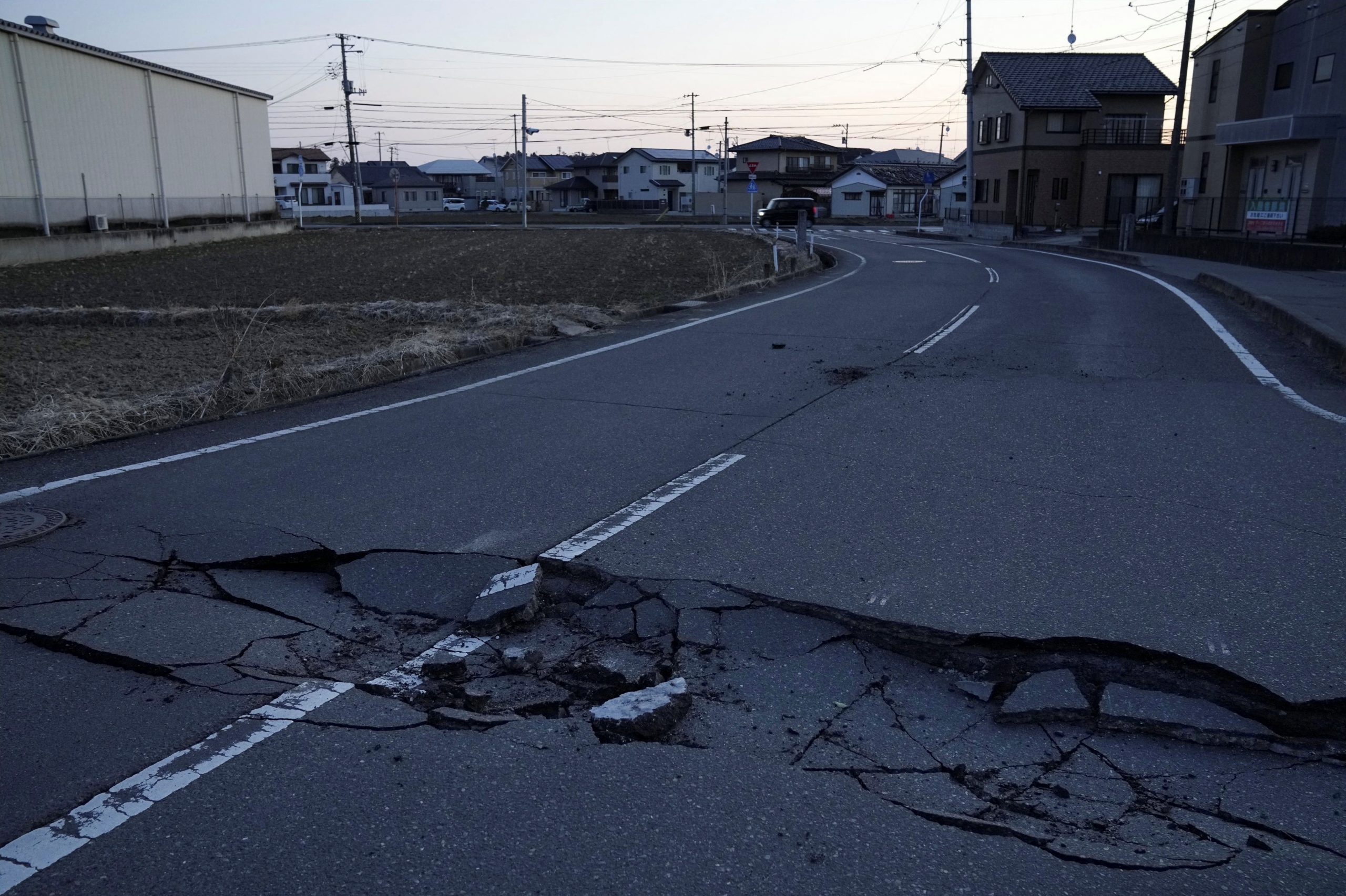
[elfsight_social_share_buttons id=”1″]
A powerful earthquake off Japan‘s northeast coast left thousands of homes without water and power on Thursday and forced factories to suspend operations, adding to supply chain woes for makers of smartphones, electronics and automobiles worldwide.
WATCH: Shaking, power outages, and flashes in the sky as 2 strong earthquakes hit central Japan pic.twitter.com/d7z9CsJzvI
— BNO News (@BNONews) March 16, 2022
The magnitude 7.4 tremblor struck just before midnight on Wednesday east of the Fukushima prefecture, the same area that suffered Japan‘s biggest quake 11 years ago.
At least four people died and 161 were injured in the latest quake, according to government spokesman Hirokazu Matsuno, whereas thousands perished in the 2011 disaster, when a magnitude 9.1 magnitude quake also triggered a tsunami and caused a meltdown at a nuclear power plant.
There were no abnormalities reported at any nuclear power plants this time, though authorities said a fire alarm had been triggered at a turbine building at the plant crippled in 2011.
The quake still caused havoc for industry, however.
Chipmaker Renesas Electronics Corp a major supplier of automotive chips, suspended production at two semiconductor plants and partially stopped output at a third.
Among them was its Naka plant in Ibaraki prefecture just north of Tokyo, which supplies semiconductors to auto companies worldwide. Chip shortages caused by COVID-19-related disruption have already forced many auto firms to cut back production.
Electronic components maker Murata Manufacturing also halted operations at its factories, as one of them making smartphone parts had a fire following the quake.
Sony Group Corp halted production at two factories in Miyagi prefecture and a third factory in Yamagata prefecture. The facilities produce storage media, laser diodes and image sensors.
Toyota Motor Corp said it would restart work at reduced capacity at two factories on Thursday night, after operations were suspended as soon as the quake struck.
Japan‘s biggest refiner, Eneos Corp, shut its Sendai refinery including the 145,000 barrel-per-day crude distillation unit (CDU).
Authorities indefinitely suspended a Shinkansen bullet train service and closed at least one major highway to the region for safety checks.
BAD MEMORIES
Parts of building facades tumbled into streets in some areas of Fukushima. Television footage showed a steep tiled roof crumpled over a parked, crushed car and workers examining cracked highways.
“This one felt different (to the 2011 quake), it was huge. I had to hang on to something to stay upright,” said Aoi Hoshino, who owns a bar in Fukushima.
An earlier tsunami warning for the northeast coast was lifted and power was fully restored to the capital by the early hours of Thursday, although people in some parts of Fukushima were still waiting for electricity by the early evening.
Prime Minister Fumio Kishida said that the government would be on high alert for the possibility of further strong tremors over the next two to three days.
The quake stuck at 11:36 p.m. local time just off the coast of Fukushima prefecture at a depth of 60 kilometres, according to the Japan Meteorological Agency.
Commemorated across the country less than a week ago, the 2011 quake was magnitude 9.1, and along with the tsunami left some 18,000 dead.
Copyright 2022 Thomson/Reuters
